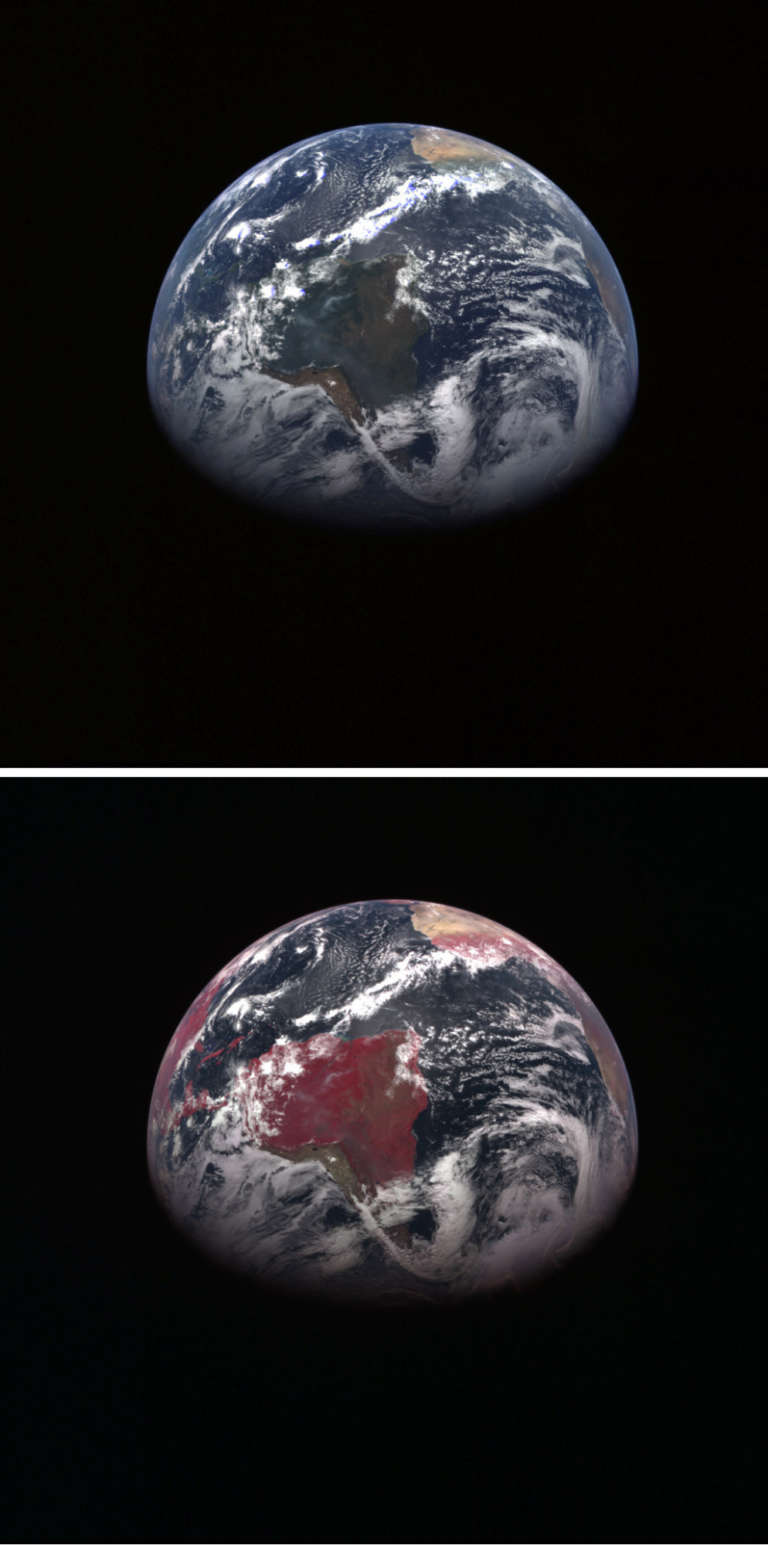Emily Lakdawalla • Aug 26, 2005
Images from the August 2, 2005 MESSENGER Flyby of Earth
On August 2, 2005, MESSENGER flew by Earth at an altitude of a mere 2,347 kilometers above Mongolia. The close pass came almost exactly a year after the spacecraft's launch, and was the first of six gravity-assist maneuvers (including one of Earth, two of Venus, and three of Mercury) that are required to allow MESSENGER to enter orbit at Mercury on March 8, 2011.
The August 2 flyby provided the first opportunity for the spacecraft to test many of its science instruments. It began by snapping a distant image of the Earth-Moon system on June 2, and finished with a beautiful movie of the spinning blue-green marble of Earth.
This pair of images shows what MESSENGER's Mercury Dual Imaging System (MDIS) can do:

MESSENGER's receding view of Earth (full movie) As MESSENGER retreated from its August 2, 2005 flyby of Earth, it captured a full day's worth of images of Earth's receding crescent, which were assembled into a movie.Video: NASA / JHUAPL
But the most exciting view of Earth released so far is a movie that MESSENGER captured as it departed. The movie comprises 358 frames taken over 24 hours, one complete Earth rotation. The animated GIF at right presents only 20 of those frames sampled throughout the movie. The spacecraft was 65,598 kilometers (40,761 miles) above South America when the imaging sequence began on August 2, and it had retreated to 435,885 kilometers (270,847 miles), farther out than the Moon, by the time of the last frame in the animation.
These images aren't particularly significant for what they reveal of Earth, but they do provide the first taste of the amazing imagery we'll see from Mercury in a few years. Only 45% of Mercury has ever been imaged by spacecraft; any images of the unseen regions would delight researchers and members of the public alike. But it looks like MDIS is going to surprise and amaze us with the details it will reveal from the surface of the innermost planet.
Support our core enterprises
Your support powers our mission to explore worlds, find life, and defend Earth. You make all the difference when you make a gift. Give today!
Donate

 Explore Worlds
Explore Worlds Find Life
Find Life Defend Earth
Defend Earth

